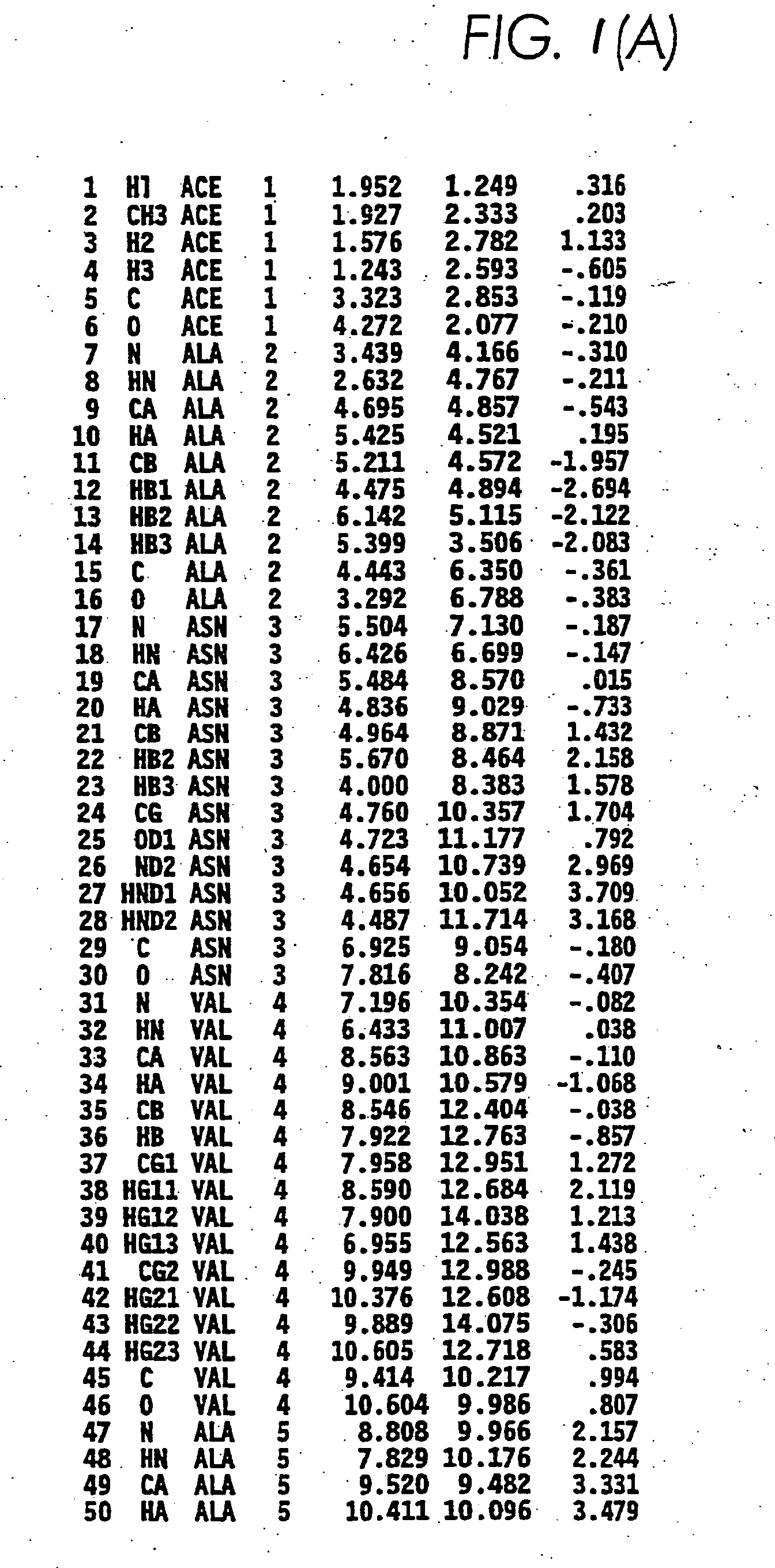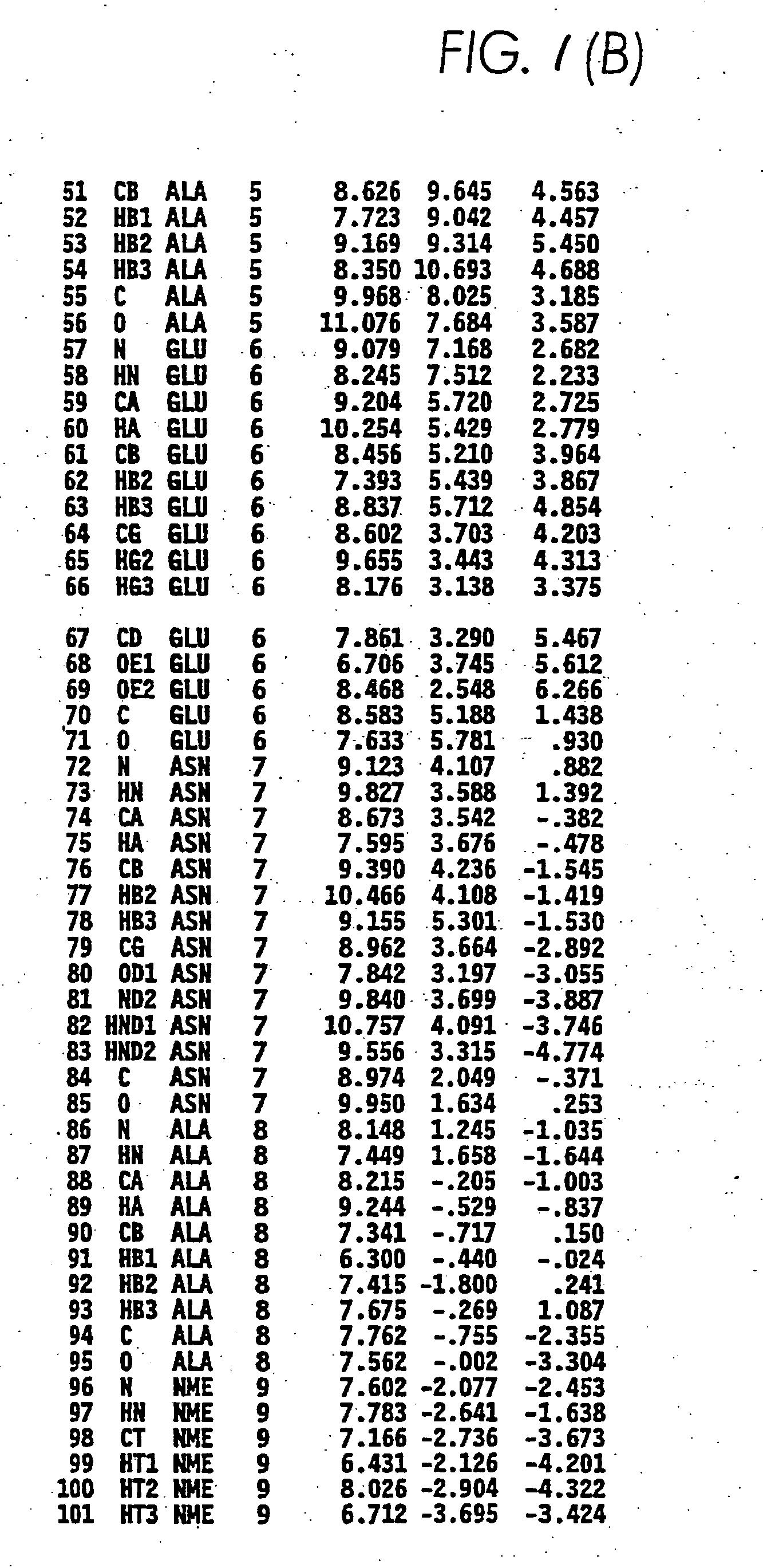Therapeutic compositions and methods using transforming growth factor-beta mimics
a technology of growth factor and composition, applied in the field of skin conditions, can solve the problems of diabetes, amputation of diabetics, and inability to achieve satisfactory results, and the progress of treatment aimed at enhancing the healing of wounds, especially chronic wounds, still leads to unsatisfactory outcomes
- Summary
- Abstract
- Description
- Claims
- Application Information
AI Technical Summary
Benefits of technology
Problems solved by technology
Method used
Image
Examples
example 1
[0198] Inhibition of DNA Synthesis of Mv-1-Lu Mink Lung Epithelial Cells
[0199] The effect of TGF-β and cytomodulin were evaluated by determining the rate of [1H]thymidine incorporation into total acid-insoluble DNA and cell number. See generally, Sampath et al., J. Biol. Chem., 267, pp. 20352-20362 (1992). DNA synthesis rates were determined in triplicate cultures after 24 hour treatment with various concentrations (10-9 M to 10-6 M) of either TGF-β or cytomodulin (which was synthesized by the Merrifield method) by adding [methyl-3H]thymidine (2 uCi / ml, 80 Ci / mmol) for 6 hours before the termination of the culture. Incorporation was terminated by aspiration of the medium, and after washing three times with phosphate-buffered saline, the trichloroacetic acid (10%)-precipitated radioactive DNA was extracted with 1.0% (w / v) sodium dodecyl sulfate, 0.1 M NaOH and quantitated by liquid scintillation counting. For cell number determination, 1×105 cells were plated in flasks in MEM contai...
example 2
[0201] Growth and Colony Formation by NRK-49 F Fibroblasts in Soft Agar
[0202] The original assay for TGF-β, the ability to promote anchorage independent growth of normal fibroblasts is still one of the hallmarks of TGF-β activity. NRK49 F fibroblasts were grown at 37° C. in DEM supplemented with 10% fetal calf serum. The experiments were performed with culture medium, 10 ng / mg epidermal growth factor (EGF), and 10 ng / ml platelet-derived growth factor (PDGF); however, unlike TGF-β, which does not induce colony formation in the absence of these factors (see, for example, Massagu, J. Biol. Chem., 259, pp. 9756-9761 (1984)), cytomodulin did induce colony formation without these two growth factors. To this, either 100 nM TGF-β (positive control) or 100 nM cytomodulin was added. NRK49 F fibroblasts (5×104 cells / ml) were mixed with 0.3% agar were plated on the bottom of 35 mm culture dishes. Colony formation was observed starting on day 3 of culture.
[0203] As expected no colonies were fo...
example 3
[0204] Further TGF-β Mimics
[0205]FIGS. 1A and 1B show the atomic coordinates of the bioactive structure of cytomodulin (atoms 1-101). Thus, the structure represented by FIGS. 1A and 1B, describes one of the possible structures consistent with TGF-β activity
[0206] Using the three dimensional structure of cytomodulin (FIGS. 1A and 1B) as a guide, cytomodulin analogs were designed and tested for TGF-β activity. An exemplary general formula to produce a peptide with atomic coordinates substantially the same as that of FIGS. 1A and 1B, which was used in the construction of these two cytomodulin analogs, was AAi-AAi+1-AAi+2 . . . -AAi+n:
[0207] (1) a hydrophobic or neutral amino acid at position i;
[0208] (2) a branched hydrophobic at position i+1;
[0209] (3) a small aliphatic at position i+2, where positions i+1 and i+2 together form the U-bend (β-bend) structure; and
[0210] (4) a side-chain possessing a hydrogen bond acceptor shortly thereafter (at position AAi+n)
[0211] Initially, tw...
PUM
| Property | Measurement | Unit |
|---|---|---|
| pH | aaaaa | aaaaa |
| concentration | aaaaa | aaaaa |
| concentration | aaaaa | aaaaa |
Abstract
Description
Claims
Application Information
 Login to View More
Login to View More - R&D
- Intellectual Property
- Life Sciences
- Materials
- Tech Scout
- Unparalleled Data Quality
- Higher Quality Content
- 60% Fewer Hallucinations
Browse by: Latest US Patents, China's latest patents, Technical Efficacy Thesaurus, Application Domain, Technology Topic, Popular Technical Reports.
© 2025 PatSnap. All rights reserved.Legal|Privacy policy|Modern Slavery Act Transparency Statement|Sitemap|About US| Contact US: help@patsnap.com



